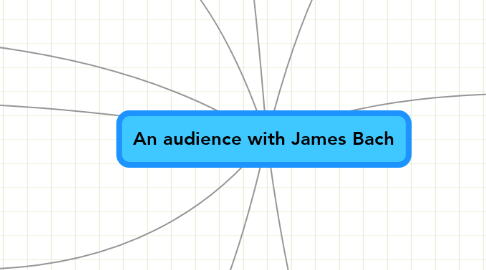
1. http://bit.ly/JamesBachMap
2. Essence of testing
2.1. Maximise Critical Distance
2.1.1. Don't be a cheerleader for the product
2.1.2. Let the tester think the worst, so nobody else has to!
2.2. Minimise Social Distance
2.2.1. Requires trust between developers and testers
3. Testing in Production
3.1. In a race against the customer to find the bugs first
3.1.1. Exploratory testing
3.1.2. Constant monitoring
3.1.3. Leverage users
3.1.3.1. Twitter
3.1.3.2. Feedback forms
3.1.3.3. Make friends with Customer Support
3.1.3.3.1. "Would you like to have a louder voice on the development team?"
3.1.3.4. Investigate feedback and raise formal bugs
4. Advocacy
4.1. Absence of test managers in agile
4.1.1. Continually have to justify our role
4.2. Learn to make our work legible
4.3. Every tester needs to be their own advocate
5. Modelling
5.1. Core of testing is building mental models
5.1.1. You need a mental model of that product in order to test a it
5.1.2. Systematically cover certain aspects of a product, rather than incidentally cover them as a consequence of your other testing activities
6. http://bit.ly/JamesBachVid
7. Testing vs Checking
7.1. Automation is fact checking
7.2. All testing is exploratory
7.2.1. Requires social competence
7.2.2. Use social competence to assess the quality of the product
7.3. Learn the distinction
7.3.1. Or risk losing your job as a tester!
8. ATDD vs Testing
8.1. Tests are NOT equivalent to a specification
8.1.1. Requirements are statements of what the customer wants
8.1.2. Testing is about critiquing a product
8.1.3. Acceptance Test check fundamental facts about a product
8.1.3.1. Acceptance Tests alone are not sufficient to "accept" a product
8.1.3.2. Acceptance requires a critical assessment (this is includes automated checks)
8.2. "Good enough to ship" does not have a true/false value so cannot be verified, it requires an assessment
8.2.1. No number of verifications add up to an assessment
8.2.2. Human judgement and social competence is required to provide an assessment
8.3. Automation can lead to goal displacement
8.3.1. Focus moves away from delivering a useful, working product
8.3.2. Goal become to get the tests to green
9. Continual Learning
9.1. Build a collegial network
9.1.1. Debate about testing
9.1.2. Test the validity of your ideas
9.2. Talk to people with different opinions
9.3. Attend conferences
9.4. Read blogs and articles and comment to share your thoughts
9.5. Study social sciences
9.5.1. Learn about biases
